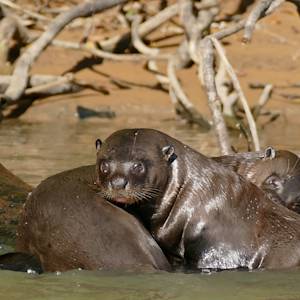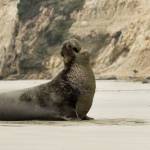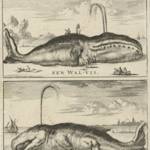Caribbean Monk Seal Extinct
circa 1952 CE • Caribbean Sea and the Gulf of Mexico
"When Christopher Columbus arrived at the island of Alta Vela, south of Haiti, on his second voyage in 1494, he saw a group of eight 'sea wolves' on the beach. A shore party killed all eight of them . . . Monk seals are the only seals that live in warm waters year-round; this fondness for tropical waters meant that they were likely to inhabit the very locations where human beings from colder climates wanted to spend their vacations . . . The final sighting of a wild Caribbean monk seal occurred in 1952, off the Serranilla Bank, 250 miles southwest of Jamaica . . ."
Richard Ellis, No Turning Back: the Life and Death of Animal Species (New York, NY: HarperCollins, 2004), 136-139.
Image: Captive Caribbean Monk Seal, New York Aquarium, New York Zoological Society, 1910.


Learn about Maya Lin’s fifth and final memorial: a multi-platform science based artwork that presents an ecological history of our world - past, present, and future.

Discover ecological histories and stories of former abundance, loss, and recovery on the map of memory.

Learn how we can reduce our emissions and protect and restore species and habitats – around the world.

See how art can help us rethink the problems we face, and give us hope that each one of us can make a difference.

Help make a global memorial something personal and close to home. Share your stories of the natural world.


